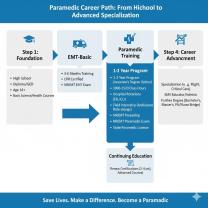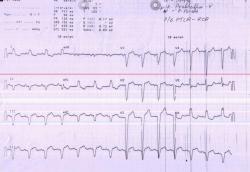What is the initial treatment of a poisonous snake bite?
The initial treatment of a poisonous snake bite, also known as snake envenomation, is critical and can significantly impact the outcome. If you or someone you are with is bitten by a poisonous snake, follow these first aid measures:
Stay Calm:
- Remaining calm is essential. Panic can increase the heart rate and the spread of venom through the bloodstream.
Call for Help:
- Dial emergency services immediately or seek medical assistance as soon as possible. Medical professionals are equipped to provide the necessary treatment and antivenom.
Keep Still and Immobilize:
- Encourage the victim to lie down and keep the affected limb immobilized. Avoid using the bitten limb, as movement can increase the spread of venom.
Position the Bite Site:
- If the bite is on an arm or leg, position it at or slightly below heart level to reduce swelling.
Remove Jewelry and Tight Clothing:
- Remove any jewelry, watches, or tight clothing near the bite site, as swelling can occur.
Clean the Bite Area:
- Gently clean the bite area with mild soap and water to reduce the risk of infection. Do not use alcohol or other harsh chemicals.
Apply a Clean Bandage:
- Cover the bite with a clean, sterile dressing or bandage. You can also use a clean cloth if sterile supplies are not available.
Do Not Cut or Suck the Wound:
- Contrary to popular belief, cutting the wound or using suction to remove venom is not recommended. It can worsen the injury and introduce infection.
Do Not Apply Ice or a Tourniquet:
- Applying ice or a tourniquet can worsen tissue damage and should be avoided.
Keep the Victim Calm:
- Encourage the victim to remain as calm and still as possible. Anxiety and increased heart rate can expedite venom spread.
Note the Time of the Bite:
- Make a note of the time the bite occurred. This information can be important for medical professionals to gauge the progression of symptoms.
Do Not Try to Capture or Kill the Snake:
- Attempting to capture or kill the snake can result in additional bites. Instead, try to remember its color and markings for identification.
It's important to understand that snakebite severity can vary depending on factors such as the type of snake, the amount of venom injected, and the victim's age and overall health. The primary treatment for snake envenomation is the administration of antivenom by medical professionals. Therefore, seeking immediate medical attention is crucial in cases of poisonous snake bites.
While waiting for medical help, focus on keeping the victim as calm and immobile as possible to slow the spread of venom. The information provided here is not a substitute for professional medical advice, and it's essential to follow the guidance of healthcare providers in the event of a snakebite.
The Critical First Steps in Treating a Venomous Snake Bite
Snake bites are a medical emergency. If you or someone you know is bitten by a snake, it is important to seek medical attention immediately. However, there are some critical first steps you can take to help the victim until they receive medical care:
- Remain calm. Snake bites can be scary, but it is important to remain calm so that you can think clearly and take the necessary steps to help the victim.
- Identify the snake. If possible, try to identify the snake that bit the victim. This will help medical professionals to determine the type of venom and the best course of treatment.
- Remove the victim from the area. Move the victim away from the snake and to a safe place where they can rest.
- Call 911 or your local emergency number. Tell the dispatcher that the victim has been bitten by a snake and that they need medical attention immediately.
- Keep the victim calm and still. Venom can spread more quickly if the victim is moving around.
- Apply a loose bandage above the bite site. This will help to slow the spread of venom.
- Remove any jewelry or other constricting items from the bitten area. As the bitten area swells, jewelry and other constricting items can become dangerous.
Administering Initial Aid for Poisonous Snake Bites
If the victim is experiencing symptoms of shock, such as pale skin, rapid breathing, and a weak pulse, you can take the following steps to provide initial aid:
- Lay the victim down on their back with their head slightly elevated.
- Loosen any tight clothing.
- Cover the victim with a blanket to keep them warm.
- Elevate the bitten limb above the heart.
- Monitor the victim's vital signs and watch for any signs of deterioration.
Immediate Response to Venomous Snakebites: A Life-Saving Protocol
The immediate response to a venomous snakebite is critical. By taking the necessary steps to help the victim until they receive medical care, you can help to save their life.
Here are some additional tips for providing immediate aid to a victim of a venomous snakebite:
- Do not try to suck the venom out of the bite site. This can actually cause more harm than good.
- Do not apply ice or heat to the bite site. This can also cause more harm than good.
- Do not give the victim any food or drink, including alcohol.
- Do not allow the victim to smoke.
If the victim is having trouble breathing, you can perform CPR. If you are not trained in CPR, you can call 911 or your local emergency number and ask the dispatcher to give you instructions.
Remember, the most important thing is to seek medical attention immediately. Snake bites can be fatal, so it is important to act quickly.













